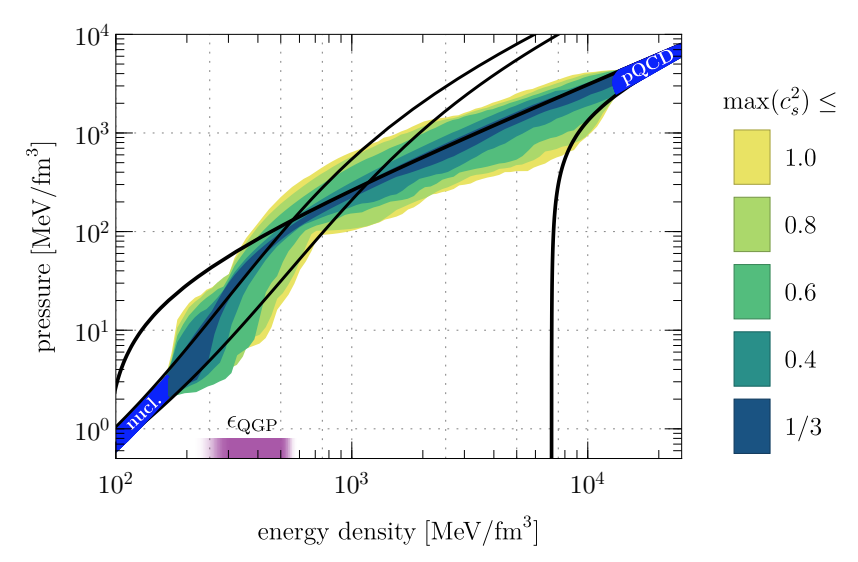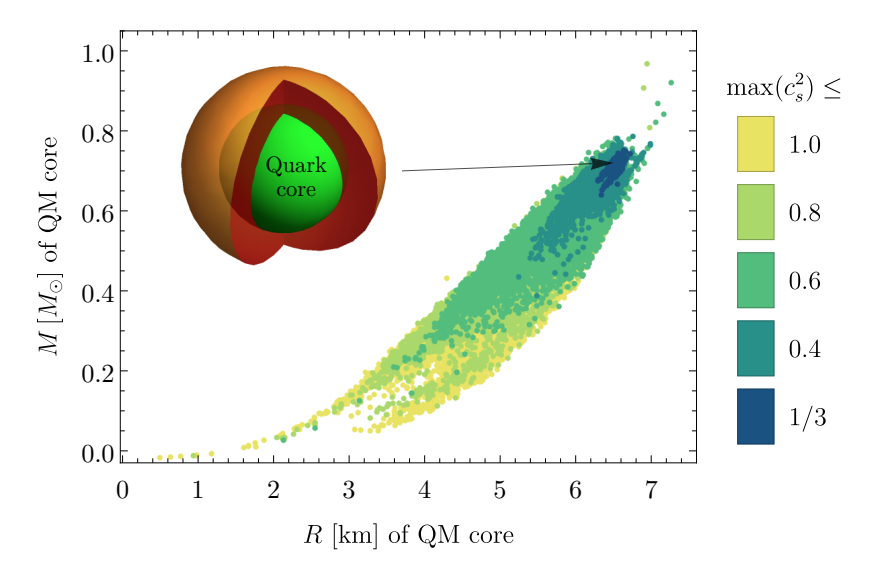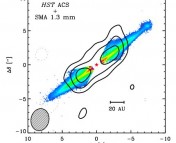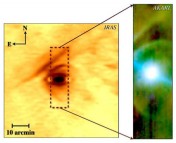Title: Quark-matter cores in neutron stars
Authors: Eemeli Annala, Tyler Gorda, Aleksi Kurkela, Joonas Nättilä, and Aleksi Vuorinen
First Author’s Institution: University of Helsinki
Status: Preprint on CERN Document Server, open access
The types of matter we experience in every day life are simple. From a young age, we learn about the solids, liquids, and gasses around us. Plasmas are also a part of our everyday life now, from TV screens to fluorescent light bulbs. Plasma occurs when there is enough energy to strip electrons away from their atoms. What happens if we take a plasma and add even more energy? The Large Hadron Collider (LHC) at CERN can slam atoms together to produce so much energy the matter melts into a plasma of quarks.
What Are Quarks Anyway?
If you thought protons, neutrons and electrons are as small as it gets, think again. Protons and neutrons are made up of even smaller particles called quarks. Quarks come in six ‘flavors’ with fun sounding names: up, down, strange, charm, bottom and top. Protons and neutrons are each made up of a different combination of three quarks, which are held together by aptly-named gluons, another type of small particle. The quarks become ‘unglued’ at an energy density of about 500 mega-electronvolts per femtometer cubed (read: very approximately, the energy of 1000 electrons in a space about the size of a proton).
While physicists have been able to view this quark-gluon plasma in a laboratory, such extreme conditions are not usually found in nature. Moments after the Big Bang, the universe would have been comprised of this quark matter, but nowadays the only place we might find it in nature is in the cores of neutron stars.

At the Heart of Neutron Stars
Quark-gluon plasma needs extreme energy to exist. That type of energy will only exist in very hot, very dense places, like neutron stars. Neutron stars are made up of — you guessed it — neutrons and are the densest objects in the universe. Imagine compressing the mass of the sun into an area the size of Dublin. In today’s paper, the authors explored what kind of neutron stars would be able to host a core of quarks.
The physics of a neutron star can be described by an “Equation of State” or EoS. This equation relates variables describing the state of matter, including pressure, volume and temperature. (PV=nRT, the ideal gas law, is an example of an EoS you may have encountered in school.) The authors of this paper developed a set of EoSs which described a wide range of neutron stars; the relationship between energy density and pressure of these EoSs is shown in the background of Figure 1.
The kink in the trend shown in Figure 1 corresponds to energy densities from 400 – 700 MeV/fm3, comparable to the densities achieved at the LHC. Above this kink are energy values that correspond to quark matter. The authors found that the most massive stars allowed by their EoSs all fell above the kink, and would have quark cores. However, the less massive 1.44-2 solar mass stars lay on and around the kink, making the contents of their cores uncertain.
The authors originally allowed a large range of energy densities and pressures into their EoSs, to avoid biasing their results. But when the allowed speed of sound, which depends on energy density and pressure, is limited to the theoretically expected value, the authors find that their two-solar-mass stars all contain a quark core.
What it Means
Figure 2 shows the expected mass and radius of the quark matter core that corresponds to each individual EoS the authors investigated. Each dot is an equation of state and the color relates to the likelihood that it would exist in nature. According to the predictions in this paper, the most massive neutron stars we’ve observed may contain large quark matter cores and most neutron stars with a mass of two suns would have a quark core of at least 3 km.

While the field of gravitational wave astronomy is still very young, the LIGO consortium has detected one merger of two neutron stars. Neutron star mergers are particularly fascinating because they can be observed in gravitational waves and light. The merging of stars with quark cores may result in a shock wave from the interface of nuclear matter with the quark matter, which has the potential to be observed in gravitational wave signals.
With further advances in gravitational wave detection and more constraints on the allowed properties of neutron stars, we will come closer to understanding the mysterious nature of these quark-y cores.




